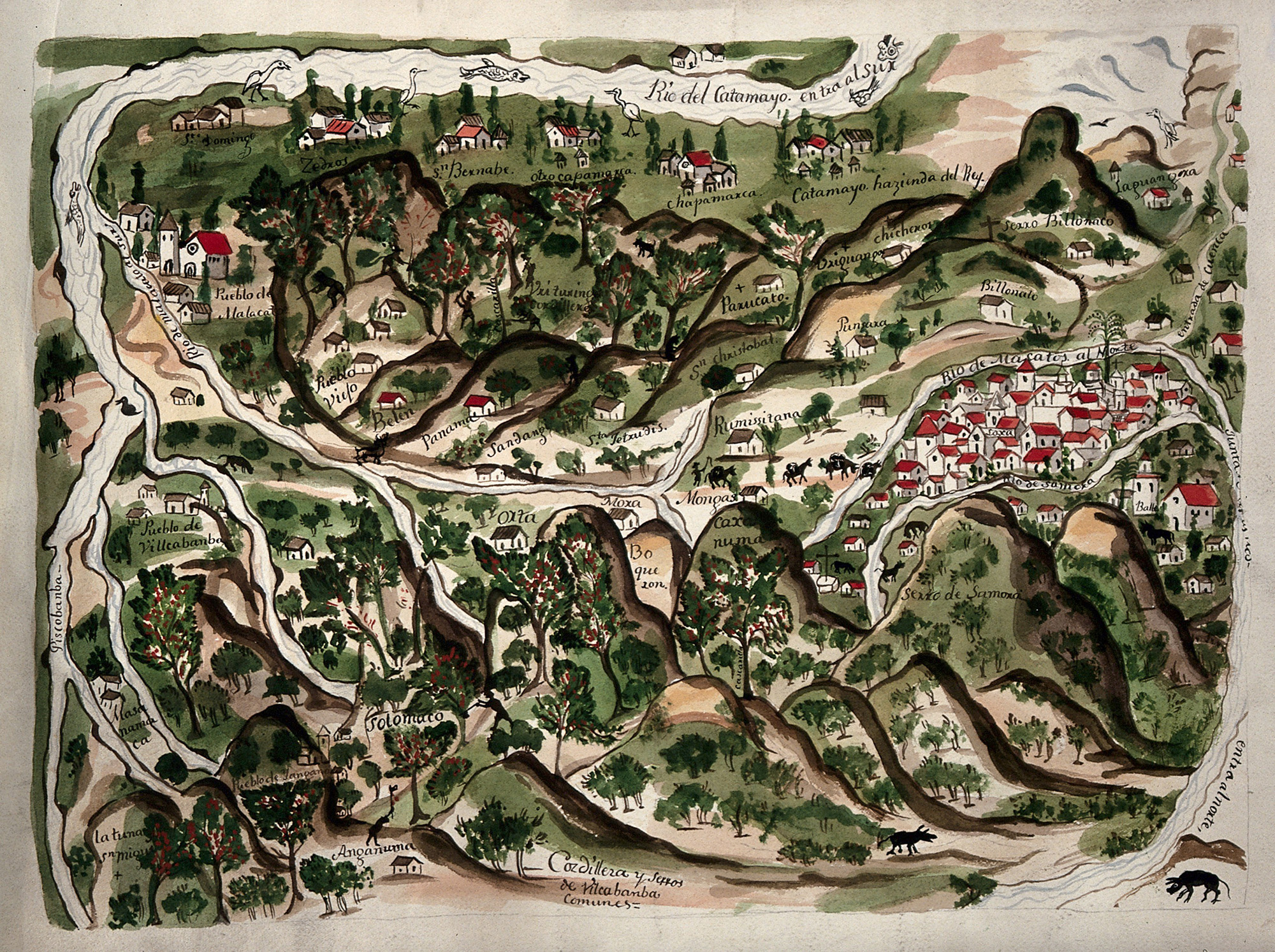In 1737, Charles Marie de La Condamine (1701–74) led a Franco-Hispanic expedition to the Audiencia of Quito to take measurements of the shape of the Earth at the equator. La Condamine visited Loja, the most famous cinchona bark producing region in South America. During his visit he depended on the expertise of Fernando de la Vega, a bark collector and curandero in Loja. Vega led La Condamine on excursions to observe cinchona trees in their natural habitat, where the bark had been collected for generations. In a transcription of a report found among the extant papers of José Celestino Mutis at the archive of the Royal Botanical Garden in Madrid, Vega recounts the various ways in which he manipulated the bark to produce extracts and tinctures for therapeutic use. Similarly, when Mutis was looking to confirm the botanical identity of what appeared to be a new variety of cinchona tree growing in the forests outside of Bogotá, Pedro de Valdivieso, an official from Loja and a member of a merchant family prominent in the cinchona trade, offered to perform the necessary analysis and ‘experiments’ to make the determination. Without the benefit of the knowledge and collections of these local experts, scientific travellers from Europe would have been at a loss to gather, understand and classify specimens.
CINCHONA COLLECTORS
Watercolor map of the Loja region in the Audiencia of Quito depicting bark collectors and cinchona trees labelled as cascarilla (c. 1769); (courtesy of Wellcome Collection)
Matthew James Crawford
Further reading
- Boumediene, S. (2016) La colonisation du savior: une histoire des plantes médicinales du ‘Nouveau Monde’ (Vaulx-en-Velin: Éditions des Mondes à faire).
- Camino, L. (1992) Cerros, plantas, y lagunas ponderosas: la medicina al norte del Perú (Piura: CIPCA).
- Crawford, M.J. (2016) The Andean Wonder Drug: Cinchona Bark and Imperial Science in the Spanish Atlantic, 1630–1820 (Pittsburgh, PA: University of Pittsburgh Press).
- Headrick, D. (1981) Tools of Empire: Technology and European Imperialism in the Nineteenth Century (New York, NY: Oxford University Press).
- Kaufman, T.S., and E.A. Rúveada (2004) ‘The quest for quinine: those who won the battles and those who won the war’, Angewandte Chemie, vol. 25, 854–85.
- Philip, K. (1995) ‘Imperial science rescues a tree: global botanic networks, local knowledge and the transcontinental transplantation of cinchona’, Environment and History, 1: 173–200.
- Wallis, P. (2011) ‘Exotic drugs and English medicine: England’s drug trade, c.1550–c.1800’, Social History of Medicine, vol. 25, 25–46.





